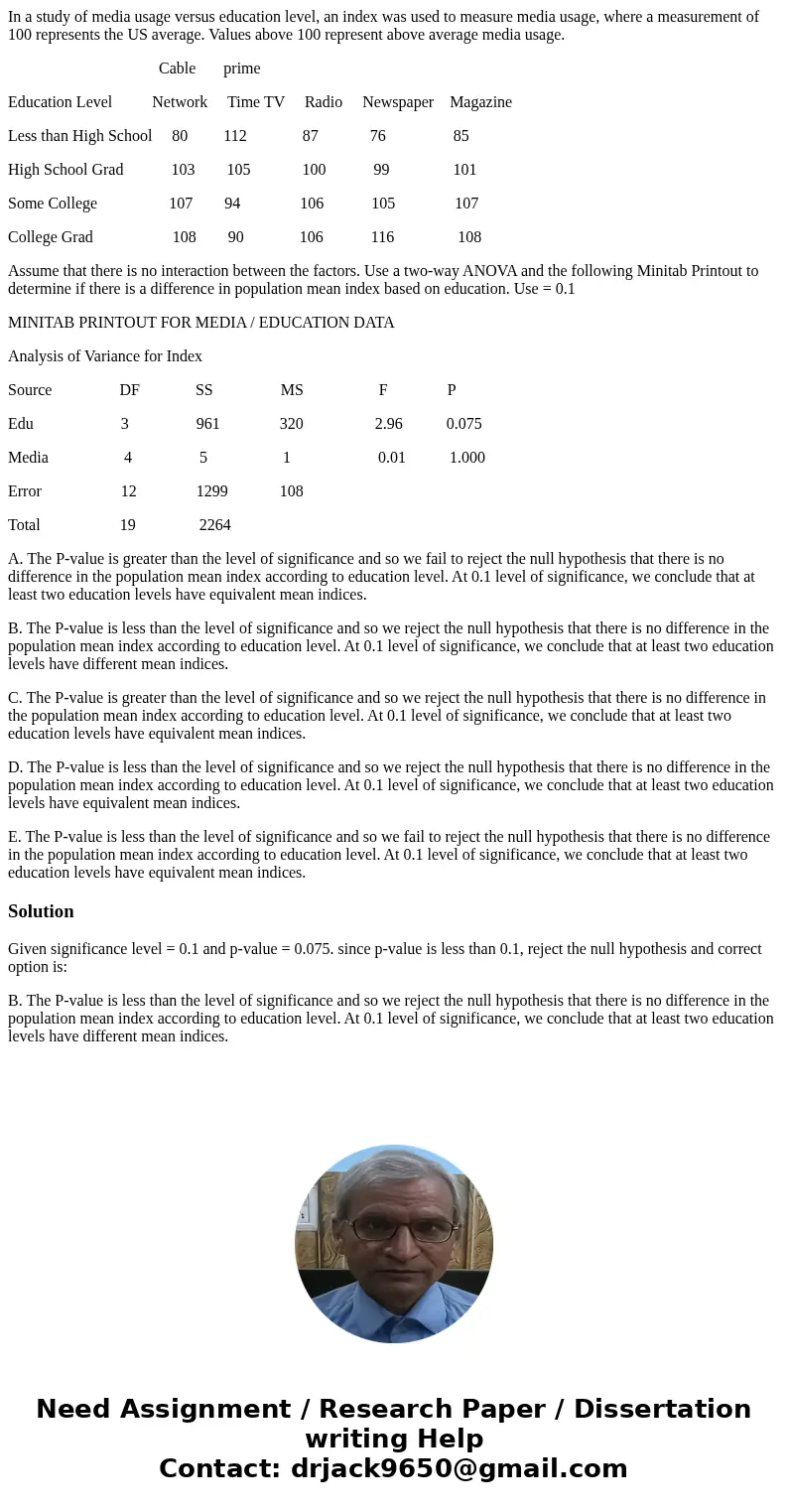In a study of media usage versus education level an index wa
In a study of media usage versus education level, an index was used to measure media usage, where a measurement of 100 represents the US average. Values above 100 represent above average media usage.
Cable prime
Education Level Network Time TV Radio Newspaper Magazine
Less than High School 80 112 87 76 85
High School Grad 103 105 100 99 101
Some College 107 94 106 105 107
College Grad 108 90 106 116 108
Assume that there is no interaction between the factors. Use a two-way ANOVA and the following Minitab Printout to determine if there is a difference in population mean index based on education. Use = 0.1
MINITAB PRINTOUT FOR MEDIA / EDUCATION DATA
Analysis of Variance for Index
Source DF SS MS F P
Edu 3 961 320 2.96 0.075
Media 4 5 1 0.01 1.000
Error 12 1299 108
Total 19 2264
A. The P-value is greater than the level of significance and so we fail to reject the null hypothesis that there is no difference in the population mean index according to education level. At 0.1 level of significance, we conclude that at least two education levels have equivalent mean indices.
B. The P-value is less than the level of significance and so we reject the null hypothesis that there is no difference in the population mean index according to education level. At 0.1 level of significance, we conclude that at least two education levels have different mean indices.
C. The P-value is greater than the level of significance and so we reject the null hypothesis that there is no difference in the population mean index according to education level. At 0.1 level of significance, we conclude that at least two education levels have equivalent mean indices.
D. The P-value is less than the level of significance and so we reject the null hypothesis that there is no difference in the population mean index according to education level. At 0.1 level of significance, we conclude that at least two education levels have equivalent mean indices.
E. The P-value is less than the level of significance and so we fail to reject the null hypothesis that there is no difference in the population mean index according to education level. At 0.1 level of significance, we conclude that at least two education levels have equivalent mean indices.
Solution
Given significance level = 0.1 and p-value = 0.075. since p-value is less than 0.1, reject the null hypothesis and correct option is:
B. The P-value is less than the level of significance and so we reject the null hypothesis that there is no difference in the population mean index according to education level. At 0.1 level of significance, we conclude that at least two education levels have different mean indices.

 Homework Sourse
Homework Sourse